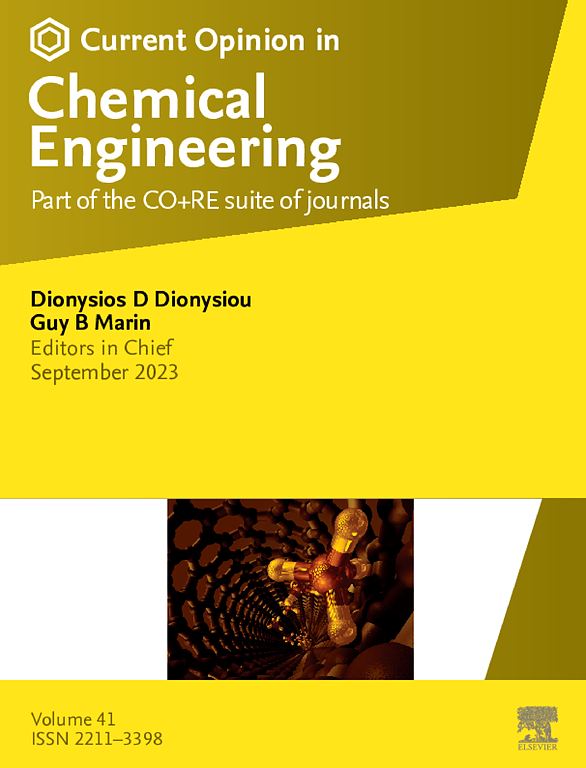Applications and applicability of the cavitation technology
IF 6.8
2区 工程技术
Q1 BIOTECHNOLOGY & APPLIED MICROBIOLOGY
引用次数: 0
Abstract
Cavitation technology, encompassing acoustic and hydrodynamic methods, represents a transformative approach to process intensification, enabling high-efficiency energy and mass transfer across diverse industrial applications. Acoustic cavitation exploits high-frequency ultrasonic waves to generate transient and stable bubbles, leading to localized high temperatures, pressures, and reactive species formation. Hydrodynamic cavitation, achieved through fluidic devices, such as Venturi tubes and vortex diodes, generates cavities under controlled low-pressure zones, providing scalable solutions for large-scale operations. This study critically examines the industrial viability of cavitation technologies, emphasizing their unique ability to combine mechanical, thermal, and chemical energy release. A detailed comparative analysis reveals the limitations of acoustic cavitation, including energy attenuation and equipment wear, against the superior scalability of hydrodynamic systems. Key challenges, such as enhancing hydroxyl radical yield, reducing operational costs, and improving system robustness, are explored alongside potential synergies with complementary technologies, like advanced oxidation processes and photocatalysis. Emerging industrial implementations, including biogas enhancement and chemical processing, underscore the evolving landscape of cavitation-based innovations. This work highlights the necessity for multidisciplinary strategies, integrating experimental, computational, and engineering perspectives to advance cavitation technology. By addressing scalability and cost-effectiveness, cavitation systems can unlock transformative opportunities for sustainable industrial applications, aligning with global environmental and economic imperatives.
空化技术的应用与适用性
空化技术,包括声学和流体动力学方法,代表了一种变革性的过程强化方法,在各种工业应用中实现高效的能量和质量传递。声波空化利用高频超声波产生瞬态稳定气泡,导致局部高温、高压和反应物质的形成。流体动力空化通过文丘里管和涡流二极管等流体装置实现,在控制的低压区产生空腔,为大规模操作提供了可扩展的解决方案。本研究严格考察了空化技术的工业可行性,强调了其结合机械、热和化学能量释放的独特能力。详细的对比分析揭示了声空化的局限性,包括能量衰减和设备磨损,而水动力系统具有优越的可扩展性。关键的挑战,如提高羟基自由基产量,降低运营成本,提高系统的稳健性,探索潜在的协同效应与互补技术,如先进的氧化过程和光催化。新兴的工业应用,包括沼气强化和化学处理,强调了基于空化的创新的发展前景。这项工作强调了多学科策略的必要性,将实验、计算和工程观点结合起来,以推进空化技术。通过解决可扩展性和成本效益问题,空化系统可以为可持续工业应用带来变革性机会,与全球环境和经济需求保持一致。
本文章由计算机程序翻译,如有差异,请以英文原文为准。
求助全文
约1分钟内获得全文
求助全文
来源期刊

Current Opinion in Chemical Engineering
BIOTECHNOLOGY & APPLIED MICROBIOLOGYENGINE-ENGINEERING, CHEMICAL
CiteScore
12.80
自引率
3.00%
发文量
114
期刊介绍:
Current Opinion in Chemical Engineering is devoted to bringing forth short and focused review articles written by experts on current advances in different areas of chemical engineering. Only invited review articles will be published.
The goals of each review article in Current Opinion in Chemical Engineering are:
1. To acquaint the reader/researcher with the most important recent papers in the given topic.
2. To provide the reader with the views/opinions of the expert in each topic.
The reviews are short (about 2500 words or 5-10 printed pages with figures) and serve as an invaluable source of information for researchers, teachers, professionals and students. The reviews also aim to stimulate exchange of ideas among experts.
Themed sections:
Each review will focus on particular aspects of one of the following themed sections of chemical engineering:
1. Nanotechnology
2. Energy and environmental engineering
3. Biotechnology and bioprocess engineering
4. Biological engineering (covering tissue engineering, regenerative medicine, drug delivery)
5. Separation engineering (covering membrane technologies, adsorbents, desalination, distillation etc.)
6. Materials engineering (covering biomaterials, inorganic especially ceramic materials, nanostructured materials).
7. Process systems engineering
8. Reaction engineering and catalysis.
 求助内容:
求助内容: 应助结果提醒方式:
应助结果提醒方式:


